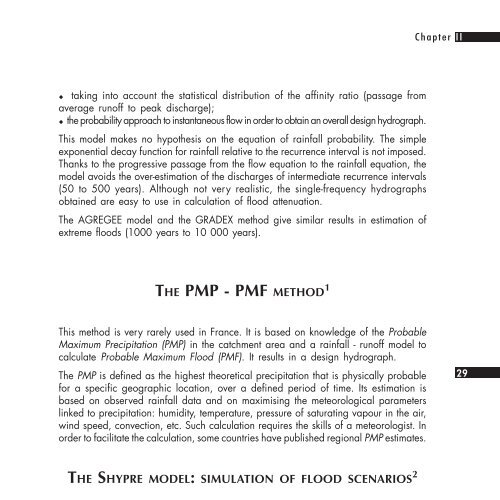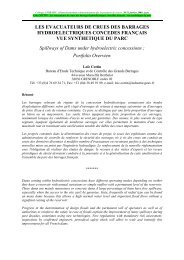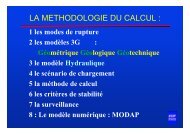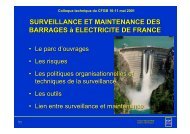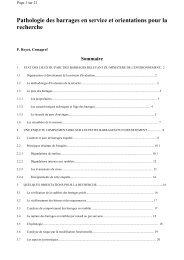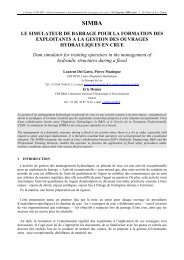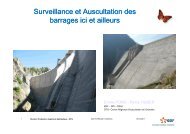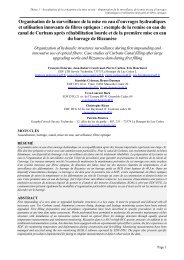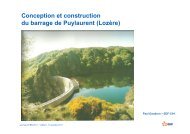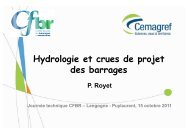SMALL DAMS
SMALL DAMS - Comité Français des Barrages et Réservoirs
SMALL DAMS - Comité Français des Barrages et Réservoirs
- No tags were found...
Create successful ePaper yourself
Turn your PDF publications into a flip-book with our unique Google optimized e-Paper software.
Chapter II<br />
!" taking into account the statistical distribution of the affinity ratio (passage from<br />
average runoff to peak discharge);<br />
!"the probability approach to instantaneous flow in order to obtain an overall design hydrograph.<br />
This model makes no hypothesis on the equation of rainfall probability. The simple<br />
exponential decay function for rainfall relative to the recurrence interval is not imposed.<br />
Thanks to the progressive passage from the flow equation to the rainfall equation, the<br />
model avoids the over-estimation of the discharges of intermediate recurrence intervals<br />
(50 to 500 years). Although not very realistic, the single-frequency hydrographs<br />
obtained are easy to use in calculation of flood attenuation.<br />
The AGREGEE model and the GRADEX method give similar results in estimation of<br />
extreme floods (1000 years to 10 000 years).<br />
THE PMP - PMF METHOD 1<br />
This method is very rarely used in France. It is based on knowledge of the Probable<br />
Maximum Precipitation (PMP) in the catchment area and a rainfall - runoff model to<br />
calculate Probable Maximum Flood (PMF). It results in a design hydrograph.<br />
The PMP is defined as the highest theoretical precipitation that is physically probable<br />
for a specific geographic location, over a defined period of time. Its estimation is<br />
based on observed rainfall data and on maximising the meteorological parameters<br />
linked to precipitation: humidity, temperature, pressure of saturating vapour in the air,<br />
wind speed, convection, etc. Such calculation requires the skills of a meteorologist. In<br />
order to facilitate the calculation, some countries have published regional PMP estimates.<br />
29<br />
THE SHYPRE MODEL: SIMULATION OF FLOOD SCENARIOS 2<br />
Cemagref 3 has developed a model for simulating flood scenarios called the SHYPRE model.<br />
This approach is based on gaining maximum value from temporal information about<br />
rainfall episodes in order to generate flood hydrographs with realistic shapes. By<br />
coupling a stochastic model for simulation of hourly rainfall and a simple model for<br />
transforming rainfall into discharge, the method generates a collection of flood<br />
hydrographs over a very long period.<br />
1. See Bibliography, references 4 and 8, p. 36.<br />
2. See Bibliography, references 2, 3 and 10, p. 36.<br />
3. The french agricultural and environmental research institute – http://www.cemagref.fr


